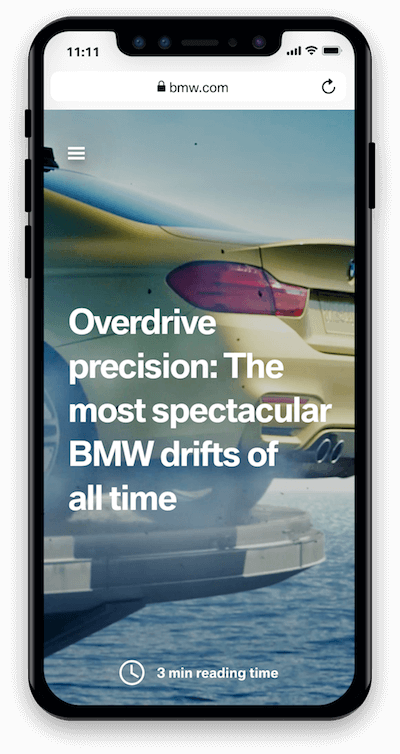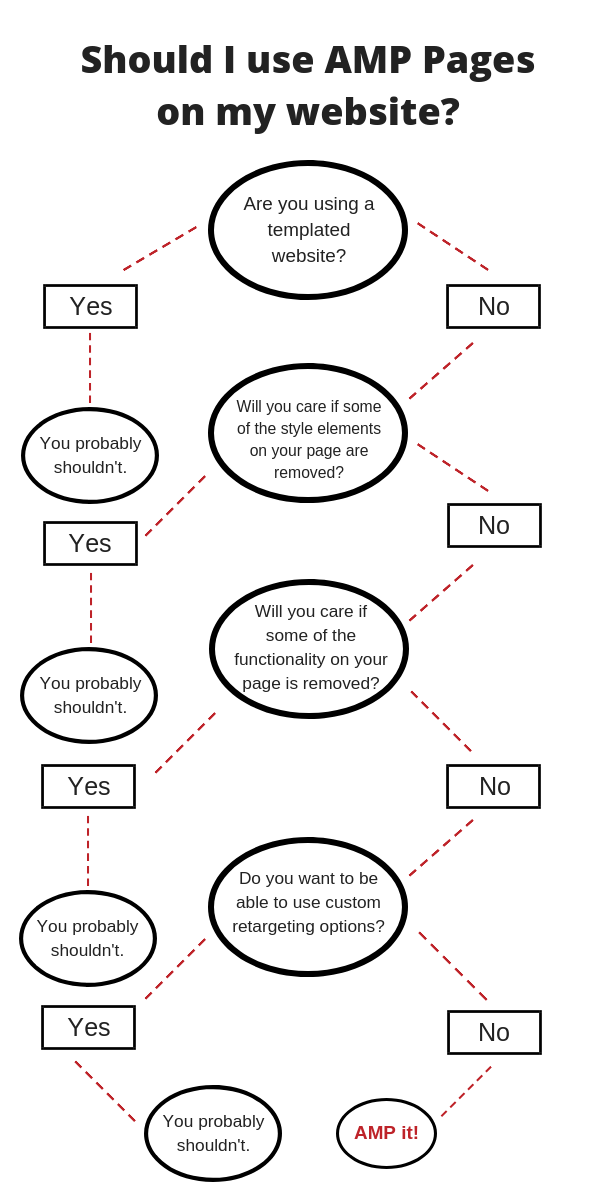Should I use AMP to Improve My Google Ranking?
- 2 January 2019

If you aren’t keeping up with mobile optimization trends, you won’t rank as well in search engines or ad platforms. You’ve likely heard by now that Google penalizes site designs that aren’t responsive to mobile. As a result, many companies have adapted their websites in the last few years to become mobile responsive. But what many companies don’t realize is a mobile-first experience has come to mean more than, “does it work on mobile?”. What mobile first really means is, “does your site work better on mobile?”. In an attempt to stay ahead of the mobile movement, some companies have gone as far as restructuring their site to prioritize mobile page speeds above all else. What are these companies doing to beat out their competition? “AMP”
What is AMP?
Accelerated Mobile Pages (AMP), is an open source project, supported by Google, focused on getting website owners and developers to create faster mobile landing pages. More specifically, AMP provides developers with a set of resources they can use to optimize landing pages for mobile speeds. The major appeal of Accelerated Mobile Pages is that they can load up to four times faster than normal pages, which leads to better site engagement, and better ad performance. The potential benefits that these pages offer are exciting, but they don’t come without drawbacks. In this article, we will cover the pros and cons of using AMP to help you determine if you should incorporate them into your mobile optimization strategy.
Example of an AMP Page
In the case of BMW, the switch to AMP resulted in a 30% higher click-through rate and a 26% increase in mobile users on their site. In order to conform to AMP requirements, they had to redesign the style elements, imagery, video content and functional capabilities of their site.

Source: AMP Project

The Benefits of AMP
Google Search Ranking
Google’s increasing emphasis on fast mobile speeds gives AMP Pages an edge in the search engine. Slow loading mobile pages can hurt both your organic and paid search rankings. Pages optimized for mobile speed will give you higher paid search rankings with the same amount of ad spend, giving you a leg up on your competition, and saving you money.
Click Through Rate
Users that need to access a site quickly are more likely to be on mobile and more likely to click on ads with high search rankings.
Better User Experience
Fast loading pages on mobile provide a valuable experience to those who may be on the go and have a limited internet connection while searching. By improving the user experience of your website, you will leave users with a better impression of your brand.
Better Site Engagement
Users are more likely to stay on your site and click into other pages once they land on an AMP Page. This is great for landing pages that are designed to move the user through a marketing funnel.

The Drawbacks of AMP
Difficult to Implement
AMP can take a lot of time and skill to create. You will most likely require the help of an experienced developer to turn the pages on your site into AMP Pages. If you are using a website template that doesn’t allow for much flexibility, it may be even more difficult if not impossible, to edit your site to conform to AMP requirements.
Removes Graphical Elements
Accelerated mobile pages require you to use a limited version of CSS, meaning you won’t be able to use the same style elements you might use in your current site. You will also need to reformat your images and video content to conform to AMP requirements.
Removes Functionality
Accelerated Mobile Pages don’t allow you to use JavaScript. This means that most forms, pop-ups live chat invitations, image sliders, widgets, and some drop down menus you currently use won’t be supported. This can be a big deal breaker for some. If you have a lot of Javascript elements you utilize on your site, AMP may not be a great fit for you. While AMP does provide resources for you to use custom AMP approved versions of commonly used website features, implementing these components into your site will require higher development costs.
Makes Tracking More Difficult
You can’t use traditional Javascript tracking codes with AMP pages. Google provides alternatives, but they are limited and less reliable.
You Can’t Use Custom Retargeting
Retargeting pixels that use Javascript can enable you to use custom retargeting options like only sending retargeting ads to people who have stayed on your site for at least 30 seconds. AMP limits your ability to qualify your retargeting audience by preventing you from using more sophisticated retargeting pixels.
Should you use AMP Pages?
That depends on your current website set up, the resources you have at your disposal, and what your priorities are. Use our decision tree to find out if Accelerated Mobile Pages are right for your site!

